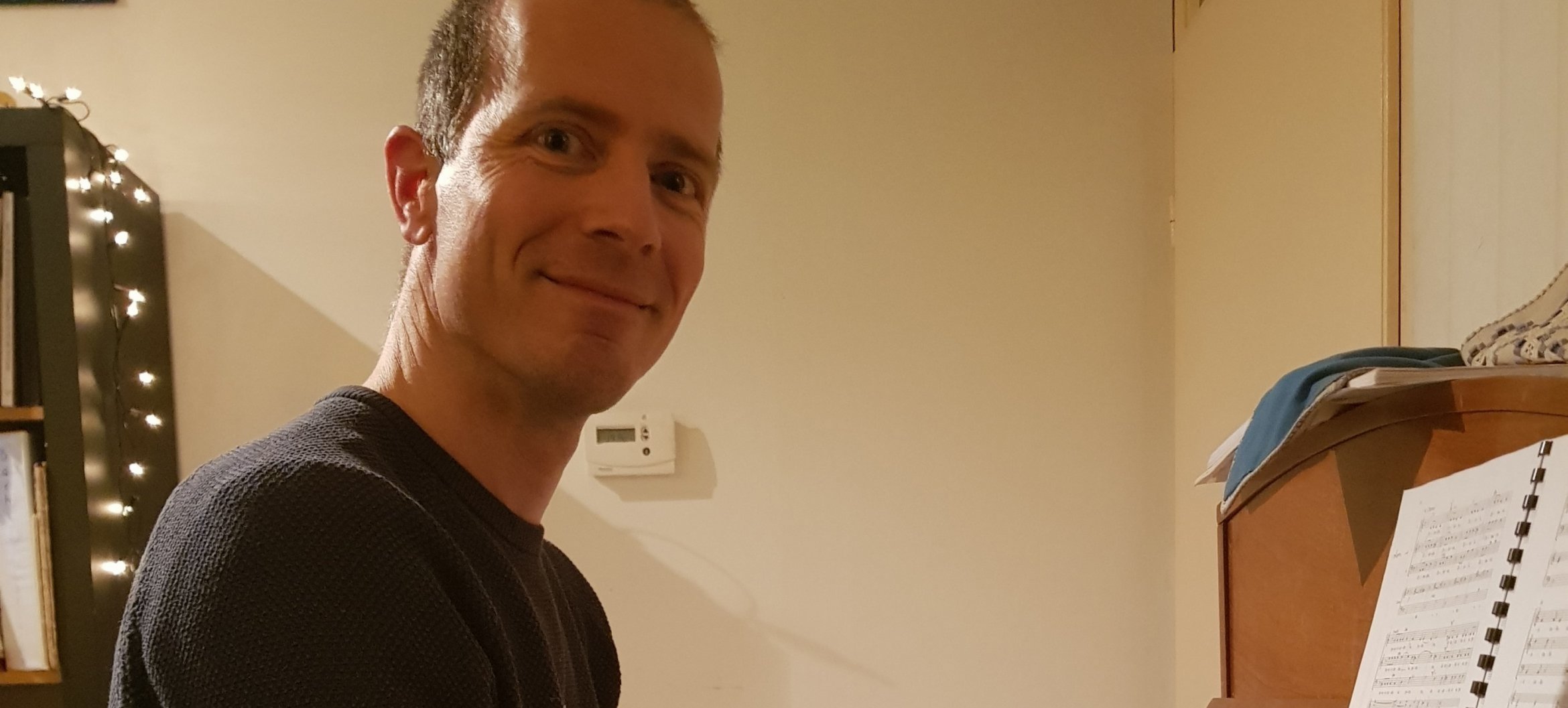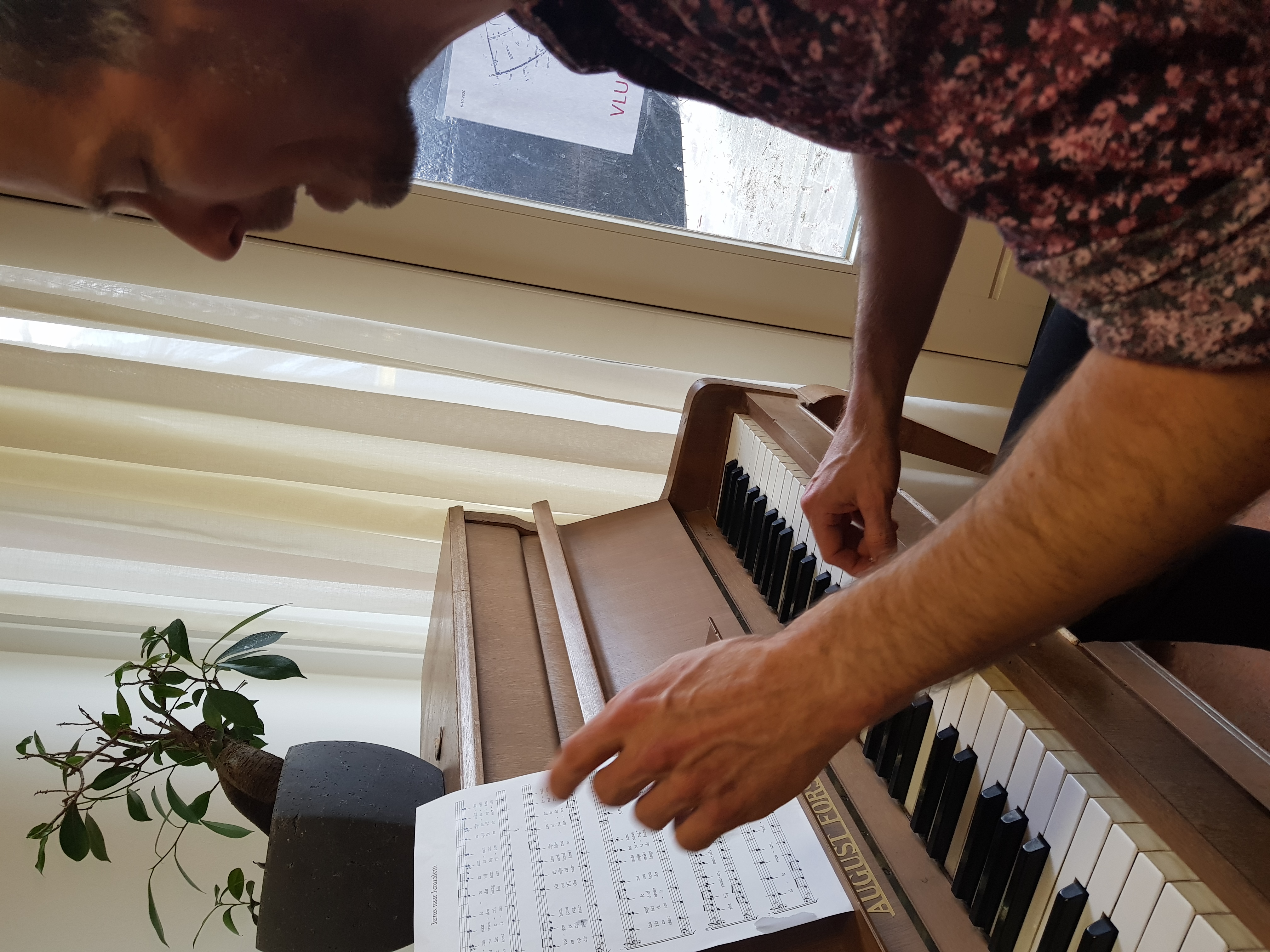Anyone can sing (if you practise)
If you have been teaching for years and are up to your ears in music, what are you still doing in the Tailor-Made bachelor Music in Education course, you might ask. But you can also turn the question around: why would you not take this course? “The extra depth in music pedagogy is extremely valuable,” says Anand Blank, a Tailor-made bachelor Music in Education student.

Through various detours – from studying Theology and Arabic to the Vocal and Organ Academy of Music – Anand Blank ended up in primary education, where he has been working for ten years now. It will come as no surprise that music has a prominent place in his classes. What is perhaps more surprising is that Anand is still not done studying. To have his feet even more firmly planted in the music profession and to give his passion for early music a place in his profession, he is taking the Tailor-Made bachelor Music in Education course in Zwolle.
Perfectly in tune vocal ensemble
“Many people tend to classify everything that is not pop music as early music, but I am interested in the Renaissance and early Baroque, around 1600 and earlier,” says Anand. “That style is characterised by unison melodies. The fact that I listen to this a lot, affects my sharpness in terms of vocal quality. This is especially useful in choral singing, which you do a lot at school. I will not force pieces by Josquin des Prez (renaissance composer, ed.) down my students’ throats, but I can use the exactitude of the intervals in his pieces. How exactly do you sing them in tune side by side? For this purpose, I once left out the piano accompaniment altogether during an internship in secondary school. Without that ‘floating voice’ of the piano, your music lesson is purely vocal. Then you achieve a flawless vocal ensemble much faster. I then listen particularly with that early-music ear.” Laughingly he says: “You should never say that out loud to your students of course, because then you lose them.”
With singing, you achieve both depth and precision in music lessons.
Singing is about invitation
His main instrument in the course is vocals, for which he has his reasons: “Your voice is always with you, that is convenient. Singing is always easy to fit in. Secondly, anyone can sing, as long as you practise. It doesn’t take much for singing to sound beautiful, especially when you sing together. Thirdly, your voice is very personal, and music is all about emotions.”. It is precisely that personal aspect that can also put off students. Opening your mouth takes more courage than beating a drum. How do you get teenagers to muster the nerve to sing? Anand gives an anecdote from pre-university education class 5: “This class was quite timid, except for two girls who had the guts. That was a bit overpowering at first, but they did pull the rest along. I start a lesson with exercises where you let your voice be heard. So you don’t have to hit a certain note. You just do weird things with your voice, relaxing you. Then we start singing at a very basic level. In the end, you even get such a reserved group to join. Those few students who find it scary just sing a little softer. I would never tell them off. I think singing is too intimate to be very strict. It’s not that everyone has to sing along loudly. Singing is about an invitation, it is about feeling comfortable. This does take some expertise on the part of the teacher. You choose musical parts at the top and bottom of the range, so something for everyone.”.
Beforehand, I was able to consult constructively with the course about the loopholes in my preliminary training.

Expressing emotions
Anand gained this expertise during his years of experience in primary education. At the anthroposophical school, Anand teaches classes 1 to 5, which is comparable to classes 3 to 7 in regular education: “The anthroposophical school is very culture-minded. We also have an arithmetic book, of course, but art education is also integrated into the subjects. Teaching is based on plays or songs. In addition, there is plenty of room for art as such. I find that sympathetic. You don’t have to teach music just because it’s good for cognitive skills. That’s not doing people justice. People are not just cognitive, they are emotional. I think it’s important that students learn ways to express those emotions. Music is an excellent vehicle for that.”
Grasping the essence
Anand is currently acquiring the depth he was looking for in his music lessons during his Tailor-Made BA Music in Education course. Anand explains: “Beforehand, I was able to consult constructively with the course about the gaps in my preliminary training. A subject such as band coaching, for example, is completely new to me and so very useful. Or take internships in secondary schools. I used to think: adolescents, I don’t know, weirdos. But guess what: I love it. That’s such a valuable discovery.” In fact, one of Anand’s best teaching memories is from his internship in years 5/6 of pre-university education: “We performed a song from the musical This is me. It’s about becoming free and daring to be yourself. That theme was topical in class; someone had recently come out. We sang a vocal ensemble, with backing vocals. At one point the vocals were perfectly in tune. The students felt that too, and they went all out. The beauty of such a moment is a combination of factors. You see the joy, you hear that it’s technically correct, and it hits home emotionally. If all that comes together, you’ve grasped the essence of music as far as I’m concerned.”


